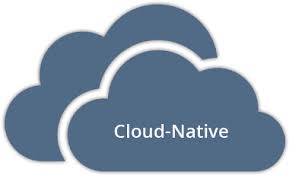The reason some companies find it possible to easily render their business to the market demands, is because they follow some processes enabling them to remain relevant in today’s world. There is no one size fits all, but we will explore some of the most successful ones. To that effect I wanted to put out what the Cloud Native Applications are all about and why they are needed.
What is Cloud Native?
Applications that have a clean contract with the underlying operating system, offering
maximum portability between execution environments and are suitable for deployment on modern cloud platforms can be called as ‘Cloud Native’. Deploying a monolithic application on the cloud does not automatically make it native. The cloud native app makes use of the services available in the cloud/PaaS provider to build the business logic. It also is written in such a way that movement between various environments can be seamlessly automated.
Why companies feel the need for it?
Today’s the most loved word in software is SPEED. However, businesses using legacy applications find it difficult to incorporate changes in business scenarios quickly. This is causing a lot of innovative, agile startups to disrupt existing bread and butter revenue streams. In order to match or better the speed, they need to adapt/refactor their softwares using micro services.
It follows that software needs to be delivered efficiently from Developers to Production in the fastest manner possible without compromising the quality and features. DevOps processes enable this.
The relentless focus on cost and value at speed implies that the application needs to collect metrics and feed it back to development to improve the focus on customer usage & reduce bottlenecks. This necessitates Application monitoring and Analytics.
And lastly all the above process’s need to converge and not just deliver improved services to the customer, but often the customer and the marketing / sales divisions need to be on top of these changes and ways to communicate them effectively.
Does it mean you have to be on public cloud?
No. An application needs to be re-engineered using the services of a particular cloud so it will leverage the best features offered by the cloud provider. However, you can choose to do this with any of the public/private or hybrid cloud infrastructure.
The use of container technology, like docker, can abstract the application from the bindings of a specific cloud provider. Docker for AWS & Azure are the experimental features launched at DockerCon for extending this abstraction.
Reference: The principles that are used for building Cloud Native apps are elaborated at Twelve Factor App.
To understand the cloud services @Whitehedge, please write to us on Sales@whitehedge.in



